Kiss of Death (1947)
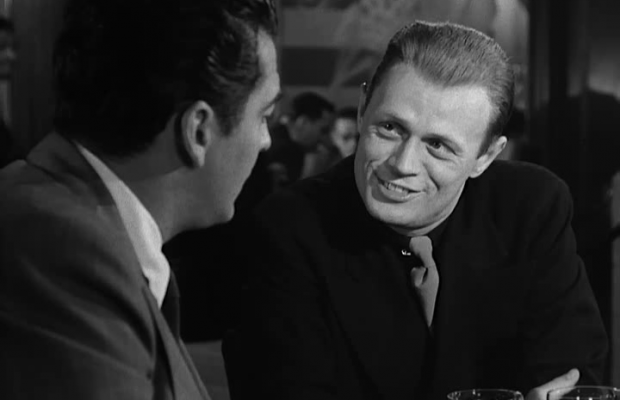
Toronto Film Society presented Kiss of Death (1947) on Monday, July 22, 2019 in a double bill with Nightfall as part of the Season 72 Summer Series, Programme 3.
Production Company: Twentieth Century Fox. Director: Henry Hathaway. Producer: Fred Kohlmar. Screenplay: Ben Hecht, Charles Lederer, Philip Dunne, based on a story by Eleazar Lipsky. Cinematography: Norbert Brodine. Editor: J. Watson Webb Jr. Music: David Buttolph. Art Direction: Leland Fuller, Lyle R. Wheeler. Set Decoration: Thomas Little. Release Date: August 13, 1947.
Cast: Victor Mature (Nick Bianco), Brian Donlevy (Assistant D.A. Louis D’Angelo), Coleen Gray (Nettie), Richard Widmark (Tommy Udo), Taylor Holmes (Attorney Earl Howser), Howard Smith (Warden), Karl Malden (Sgt. William Cullen), Anthony Ross (“Big Ed” Williams).
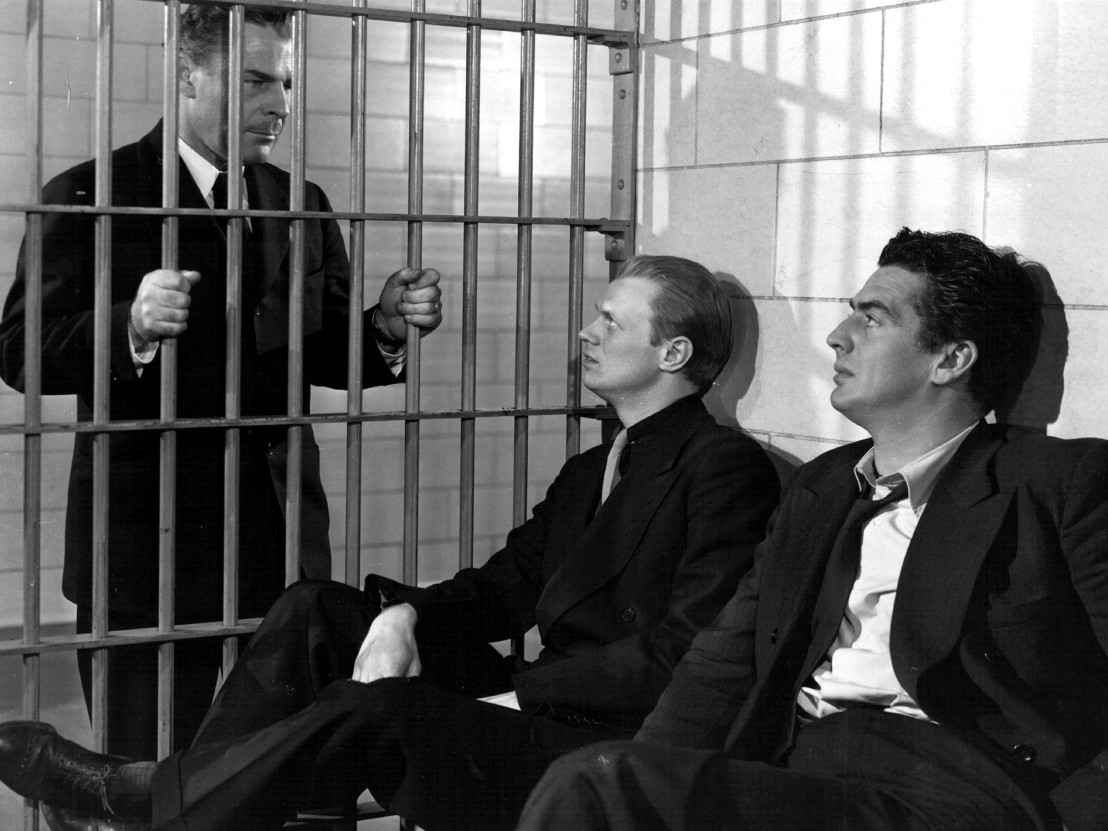
Film noir can be many things – a film movement, a current, a genre, or a cycle, for instance, depending on the critic. I prefer to call it a STYLE, featuring chiaroscuro lighting, deep shadows, oblique lines, low and high-angle shots, scenes shot at night on wet city pavements, world-weary heroes, and a generally hopeless feel.
With this in mind, we do not need to restrict the film noir style to gangster/criminal/detective films. A more complex film like Nightmare Alley qualifies. Even in a sentimental film like Capra’s It’s a Wonderful Life you can find a lengthy sequence of decidedly noir filming, when we are invited to imagine a world in which George Bailey had never existed. The sequence even boasts of a queen of film noir, the irreplaceable Gloria Grahame, as the town floozy.
Of course, the early directors of the films in our Summer Series did not know that they were making ‘films noirs”. The term was only invented after World War II when the American films held up for distribution in Europe finally arrived there. In France, critics noted that a large number of these films reminded them of the dark novels that were published in a popular collection called “série noire”. Thus the term “film noir” came into use by analogy. Films like This Gun for Hire, The Maltese Falcon, Double Indemnity, The Woman in the Window or The Big Sleep certainly qualified for the classification.
These early noir films were all filmed on studio sets. Their intention seemed to be to create an unreal world. Overstatement with shock value seemed to be the order of the day. If the heroes seemed authentically disturbed, the sets and lighting served to create a stylized and off-beat world to match the pessimism.
This is why tonight’s films come as a surprise. Both of them were shot on location! In fact, director Henry Hathaway’s role in the history of film noir is unique. His aesthetic was one of Realism, not one of artistic stylization. A reliable and respected filmmaker with a record of work in many genres, in 1945 he made The House on 92nd Street which became a seminal work in a current of “semi-documentary” films. A portentous voice announced that it was telling a true story taken directly from the files of the F.B.I. The film proceeded then as realistically as possible without artistic flourishes and with scenes shot in actual places. Hathaway followed this film with two other semi-documentary films, Call Northside 777 with James Stewart, and 13 Rue Madeleine with James Cagney. (All three films had numbers in their titles.) Each film was introduced by an official-sounding voice-over that referred to the reality of the crime that followed.
Kiss of Death is something of a sequel to the famous trilogy. It is again shot on location, and is told by a narrator. But this narrator, Nellie, played by Coleen Gray, is a character in the story, not an omniscient reader of F.B.I. files. Her story is about two criminals who become enemies. That’s it. But in the midst of the banal story, there are two sequences where Hathaway abandons his normal straightforward techniques to indulge in film noir pyrotechnics. Nothing like last week’s incomparable The Big Combo. But watch for them.
As well, who can ever forget Richard Widmark in his first film role – as the cackling villain, Tommy Udo? He is like a demented Dan Duryea on steroids, and was nominated for a Supporting Role Oscar for his effort.
Brian Donlevy plays a good guy, one of the several heavy-set Brians – like Brian Keith, Brian Dennehy, and Brian Coxe – who have added weight to each of their respective films.
Victor Mature, like Donlevy, seemed to be born to film noir. Many say that Kiss of Death is his best performance, but he is still better remembered for his Samson in Samson and Delilah two years later.
Finally, a word about Coleen Gray. This gentle lass seemed to be an ideal ingénue for a Bing Crosby film. In fact, she eventually played opposite Crosby in Riding High. Kiss of Death is her first credited role. For such an innocent sweet thing, it is astonishing that she found herself, sooner or later, in a rash of noirish films, like Nightmare Alley, The Sleeping City, Kansas City Confidential and The Killing. Go figure!
Introduction by Cam Tolton
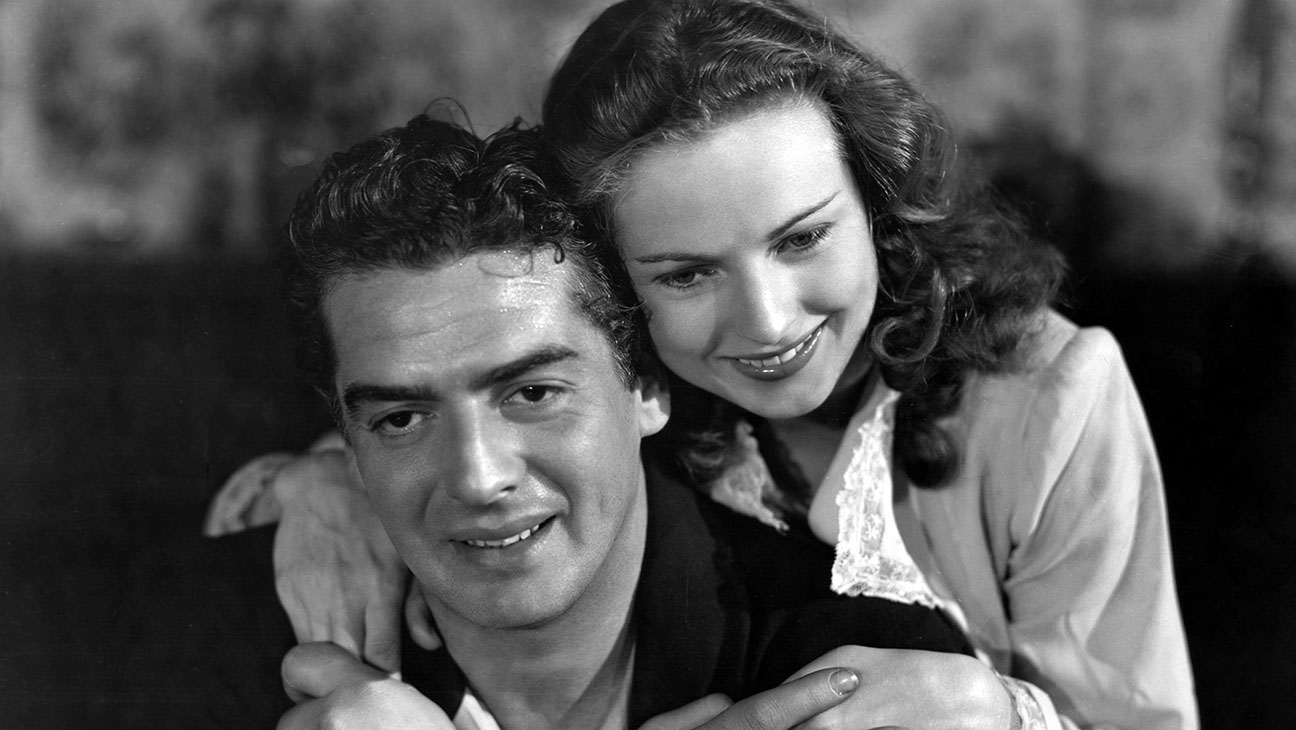
Henry Hathaway, Director of Kiss of Death, was born in Sacramento, California with the lofty name Henri Léopold de Fiennes Hathaway. His father was the American actor and stage manager Rhody Hathaway. His mother was a Belgian aristocrat born in Hungary, the Marquise Lillie de Fiennes, who acted under the name of Jean Hathaway. The de Fiennes branch of his family came to America from Belgium in the 19th century. His grandfather was part of a committee commissioned by King Leopold I of Belgium to negotiate a treaty between Belgium and the Sandwich Islands; present-day Hawaii. The negotiations failed to acquire Hawaii for Belgium and Hathaway’s maternal grandfather, Marquis Henri Léopold de Fiennes, thought it prudent to settle in America. Henry Hathaway appeared as a child actor in some films directed by Allan Dwan. He served in the U.S. Army during the First World War. When he was discharged, he briefly worked in finance, but returned to Hollywood in 1925 to work in the film industry. Hathaway began working as an assistant to Victor Fleming, Josef von Sternberg, and Fred Niblo—who directed 1925’s Ben-Hur: A Tale of the Christ, starring Francis X. Bushman and Ramon Novarro. He continued to work as an assistant director, helping direct the likes of Gary Cooper, Marlene Dietrich, Adolphe Menjou, Fay Wray, Walter Huston, and Noah Beery. He made a successful transition from silent to sound films along with many of the actors he had worked with in the 1920s.
Hathaway made his directorial début at Paramount in 1932 with a western film, Heritage of the Desert, based on a Zane Grey novel. The film starred a young Randolph Scott and started him on a lengthy career as a leading man and cowboy star. It was followed by at least ten more adaptations of Zane Grey novels starring Scott. Hathaway proved himself to be a versatile director who put his mark on many film genres. His westerns at Paramount were followed by the action film Come On Marines! as well as the melodrama The Witching Hour and the Shirley Temple film Now and Forever, also starring Gary Cooper and Carole Lombard. Hathaway directed Gary Cooper in The Lives of a Bengal Lancer, an action adventure set in India. The film was a big hit with audiences and earned seven Academy Award nominations, including Hathaway’s only nomination for Best Director. Hathaway proved himself to be one of Hollywood’s top directors, turning his hand not only to action films, but also to films noir, such as tonight’s offering, Kiss of Death, and Johnny Apollo, with Tyrone Power; swashbucklers like The Black Rose, also starring Power; Prince Valiant; and even the fantasy-themed romance Peter Ibbetson, starring Gary Cooper. He is well known for his film noir offerings, including Niagara, in which Marilyn Monroe was given top billing. Her other two films of that year, Gentlemen Prefer Blondes and How to Marry a Millionaire, cemented Monroe’s status as a movie star. Hathaway directed John Wayne in a number of films, including The Shepherd of the Hills, The Sons of Katie Elder, and True Grit, which won Wayne an Academy Award.
Hathaway’s last three films before his passing were the war drama Raid on Rommel, starring Richard Burton and Canadian actor John Colicos; the western Shoot Out, starring Gregory Peck; and his final film, Hangup. Hangup is a “Blaxploitation” film, a genre that was popular during the 1970s. The story is about a black cop who seeks revenge on the drug dealers who got his girlfriend addicted to heroin. The film was popular with the intended youth audience, but panned by critics. Leonard Maltin wrote of the film, “Hathaway has done many fine films, but this, his last, isn’t one.” Henry Hathaway was married to Blanche Gonzales until his passing in 1985; she passed soon after. His body of work earned him a star on the Hollywood Walk of Fame.
Notes by Bruce Whittaker

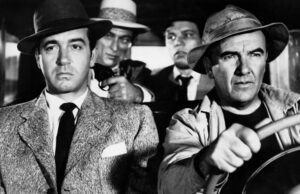
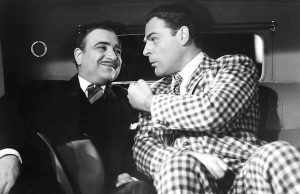
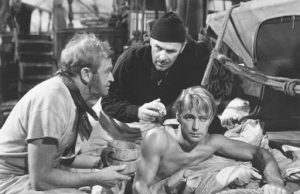






Leave a Reply